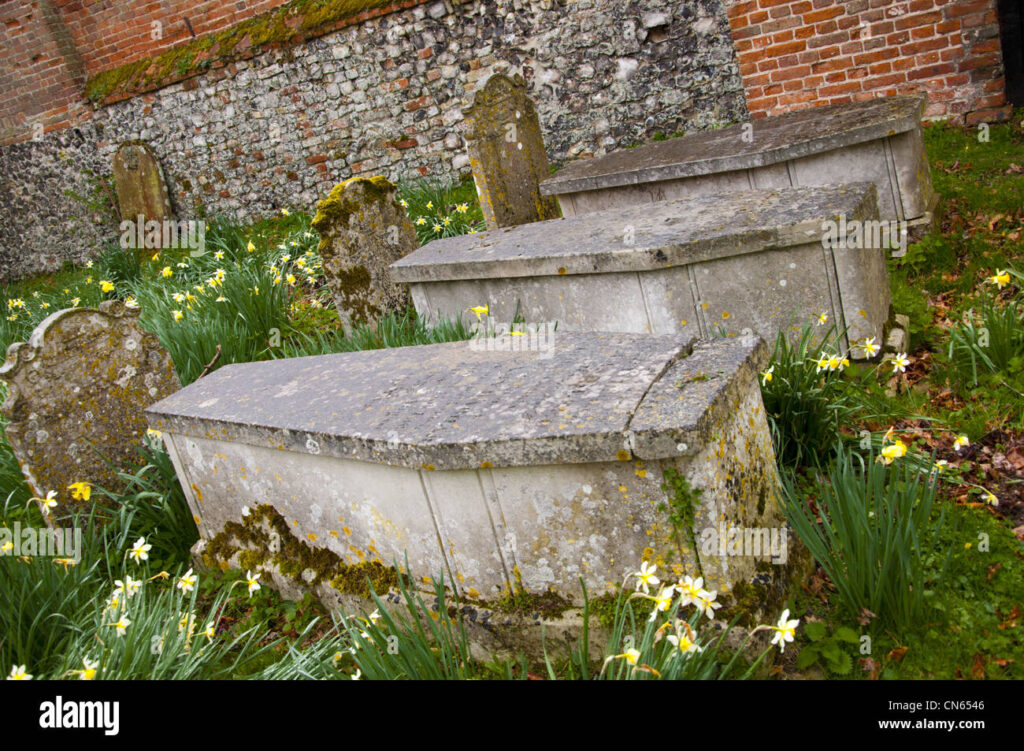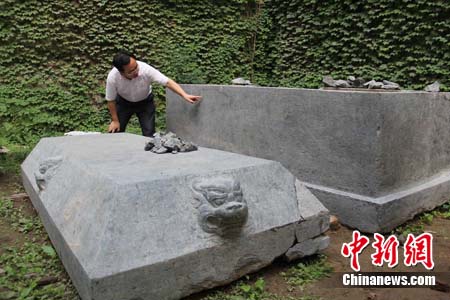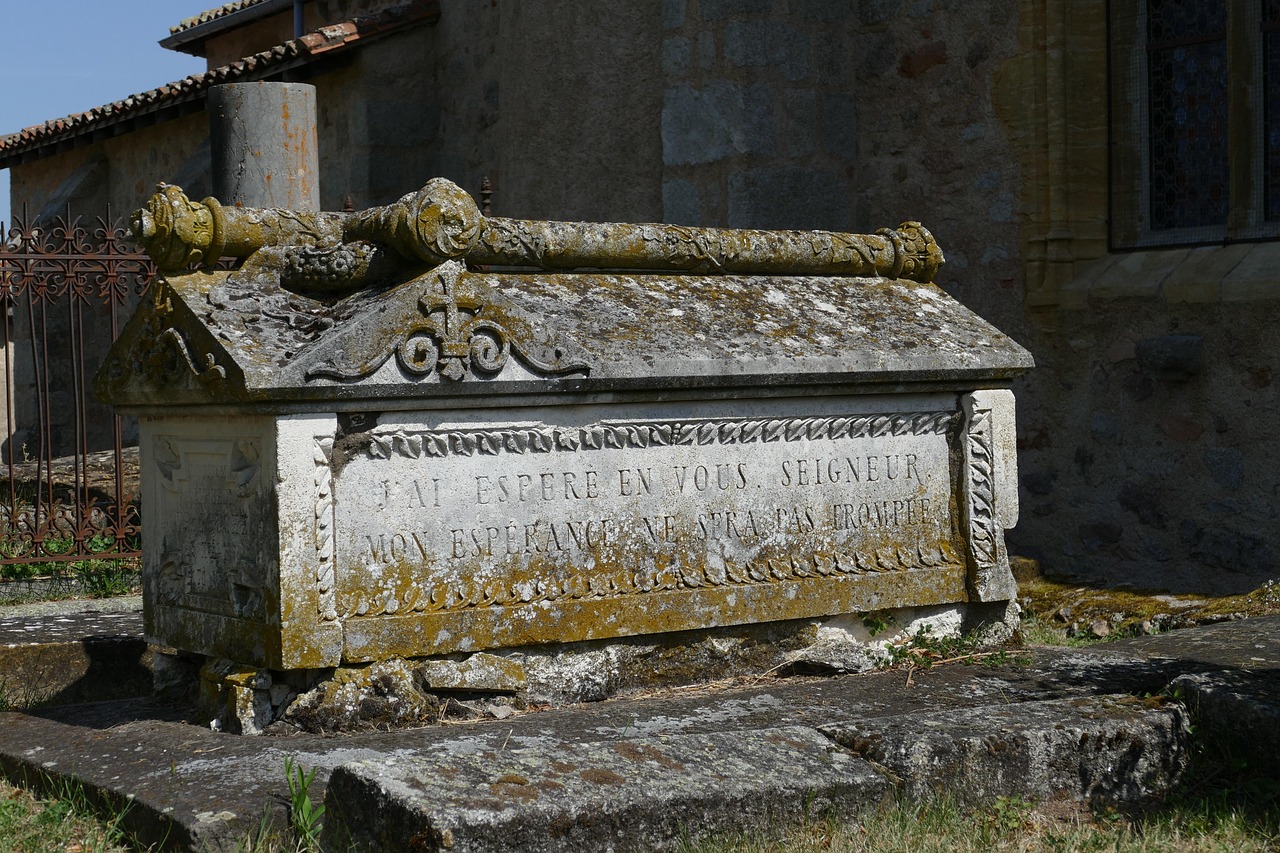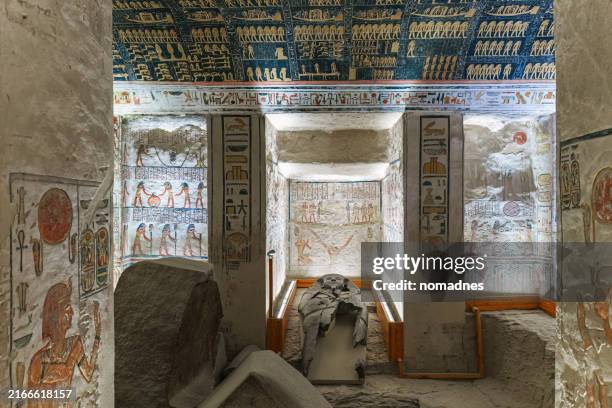What Can the Dayishan Stone Coffin Tombs Teach Us About Han Dynasty Beliefs?

An Essential Guide to Visiting Dayishan Stone Coffin Tombs
Nestled in the serene landscape of Xuzhou, the Dayishan Stone Coffin Tombs stand as an extraordinary testament to ancient burial practices, offering a glimpse into the lives and beliefs of the Han Dynasty aristocracy. What sets these tombs apart is their remarkable craftsmanship and the complex architectural features that include intricately carved stone coffins and elaborate burial chambers that were designed to accommodate the afterlife. Each tomb is a microcosm of history, filled with artifacts that narrate the stories of those who once inhabited this land.
In this guide, we will explore the fascinating history of the Dayishan Stone Coffin Tombs, from the significance of their unique structures to the cultural practices surrounding burial during the Han Dynasty. We’ll provide essential information on how to reach the site, what to expect during your visit, tips for maximizing your experience, and insights into nearby attractions that enrich your journey. Whether you’re a history buff or simply seeking a quieter alternative to China’s more crowded tourist spots, the Dayishan Stone Coffin Tombs promise an unforgettable experience steeped in the echoes of time.
In This Guide
- An Essential Guide to Visiting Dayishan Stone Coffin Tombs
- The Rich History and Legends of Dayishan Stone Coffin Tombs
- Main Highlights: What You Absolutely Can’t Miss
- Planning Your Visit: A Practical Guide
- Tickets: Prices, Booking, and Tips
- How to Get There: A Complete Transportation Guide
- Local Cuisine and Accommodation Nearby
- Frequently Asked Questions
- Final Thoughts on Your Trip
The Rich History and Legends of Dayishan Stone Coffin Tombs
Unveiling the Enigma of Dayishan Stone Coffin Tombs
Nestled in the verdant hills of Xuzhou, the Dayishan Stone Coffin Tombs (大伊山石棺墓) echo with whispers of an ancient civilization, revealing the intriguing history and legends that have shaped this remarkable site. These tombs, renowned for their unique stone coffins and elaborate burial practices, are a window into the lives of the Han Dynasty elite and the mysteries of the afterlife.
The Han Dynasty: A Period of Prosperity and Innovation
The Dayishan tombs date back to the Han Dynasty (206 BC – 220 AD), a time marked by significant cultural and technological advancements in China. During this era, the establishment of the Silk Road facilitated trade and cultural exchange, leading to a flourishing of the arts, science, and philosophy. The tombs are believed to belong to members of the nobility, specifically the Kings of Chu, who were granted lands by the first Emperor of China. The intricate designs and construction of the tombs reflect the wealth and status of their occupants.
The architectural sophistication of the Dayishan tombs is truly astounding. Carved directly into the rock, these tombs feature stone coffins designed to withstand the test of time. The burial chambers often included various amenities intended for the afterlife, such as cooking facilities, storage rooms, and even toilets—a testament to the belief in a life beyond death.
Legends of the Kings of Chu
Among the most captivating tales linked to the Dayishan site are those surrounding the Kings of Chu. One famous legend speaks of Liu Zhu, the sixth King of Chu, who was buried in the Dayishan tombs. It is said that upon his death, the king’s spirit roamed the hills, seeking solace in the beauty of nature. Locals believed that his spirit would bless those who cared for the land and its surroundings, leading to a community devoted to preserving the tombs.
Another popular tale recounts the adventures of a mysterious traveler who stumbled upon the tombs while searching for legendary treasures. According to the story, the traveler was guided by an ethereal light, leading him to a secret chamber filled with golden artifacts and precious gems. However, upon discovering the resting place of the king, he realized that disturbing the slumber of the dead would bring misfortune. Respecting the king’s eternal peace, he left the treasures untouched, ensuring that the tombs remained a sacred site.
Archaeological Discoveries and Their Significance
The significance of the Dayishan Stone Coffin Tombs extends beyond their architectural beauty; they have also yielded important archaeological findings. Excavations have uncovered a wealth of artifacts, including pottery, weapons, and inscriptions that provide insight into the customs and beliefs of the Han Dynasty. These discoveries have not only enhanced our understanding of burial practices but have also illuminated the social and political structures of the time.
The tombs also serve as a reminder of the ancient belief in the afterlife, where the living would provide for the deceased through offerings. This belief is reflected in the layout of the tombs, which often contained items meant to assist the deceased in their journey to the next world.
A Journey Through Time
Visiting the Dayishan Stone Coffin Tombs is more than just an exploration of ancient burial sites; it’s an immersive journey through time. As you wander through the intricate chambers and gaze upon the remarkable stone coffins, you can almost hear the echoes of the past—the whispers of kings, the rustle of silk robes, and the murmurs of legends that have captivated generations.
In conclusion, the Dayishan Stone Coffin Tombs stand as a testament to the rich history and vibrant legends of China’s Han Dynasty. They invite travelers to delve into a world steeped in mystery, where history and myth intertwine, creating an unforgettable experience for those who seek to uncover the stories held within these ancient stones.

Dayishan Stone Coffin Tombs.
Main Highlights: What You Absolutely Can’t Miss
The Tomb of the Sixth King of Chu
Step into history as you explore this remarkable burial site, believed to be the resting place of Liu Zhu, the sixth King of Chu. Carved into a natural stone hill, this tomb showcases remarkable preservation, featuring intricate designs that provide a glimpse into the Han Dynasty’s opulent funerary practices. As you walk through the dimly lit chambers, take a moment to admire the “his and hers” burial caskets—symbolic of the royal couple’s eternal bond. Tip: Enhance your visit by renting an audio guide available in English; it offers fascinating insights that rival those of grand historical sites like Versailles.
The Ingenious Drainage System
Marvel at the ancient engineering prowess that allowed this tomb to incorporate a sophisticated drainage system, still functional after 2,000 years. The tomb features a well with water that replenishes itself, flowing seamlessly into a carefully constructed drainage network. This innovative design reflects a deep understanding of sustainability, even in the afterlife. Tip: Look closely for how the water interacts with the tomb’s architecture; it’s a testament to the ingenuity of Han Dynasty artisans.
The Dual Tombs: A Royal Connection
Adjacent to the main tomb lies the burial site of the queen, connected by a passageway that symbolizes their unity even in the afterlife. This unique feature allows visitors to traverse between the two tombs, offering a poignant reminder of the couple’s intertwined fates. Tip: Be sure to take photographs in this shared space, as it beautifully encapsulates the theme of partnership that was significant in ancient Chinese culture.
The Captivating Sculpture Garden
After immersing yourself in the tomb’s history, step outside to the adjacent sculpture garden, where an array of stone sculptures invites contemplation and admiration. This serene setting is perfect for unwinding and reflecting on the historical weight of your visit. Tip: Visit during the early morning or late afternoon to enjoy softer lighting for photography and a more tranquil atmosphere.
The Imperial Edicts Museum
Your entry ticket grants you access to the nearby museum dedicated to Imperial Edicts. Here, you can explore artifacts and documents that reveal the intricacies of governance and law during the Han Dynasty. This museum provides a broader context to your visit, showcasing the legacy of the rulers who shaped China’s history. Tip: Allocate an hour to thoroughly enjoy the exhibits and perhaps join a guided tour for deeper insights.
The Party Room: An Afterlife Celebration
Within the tomb, discover a fascinating area dubbed the “party room,” designed for the deceased to enjoy feasts in the afterlife. This space, complete with cooking facilities and even a toilet, reflects the belief that life continues beyond death, complete with all the comforts one could desire. Tip: Engage your imagination as you visualize the grand celebrations that would have taken place here—an intriguing aspect of ancient burial customs.
Practical Tips for Your Visit
- Getting There: The Dayishan Stone Coffin Tombs are located a short distance from Xuzhou city center. Public transport is available, but consider hiring a local guide to simplify your journey.
- Opening Hours: The site is open daily from 8 AM to 7 PM, so plan your visit accordingly to avoid crowds.
- Duration: Allocate about 1-2 hours for a comprehensive experience, including time for the museum and garden.
- Photography: Bring your camera, but be respectful of the historical nature of the site—avoid flash photography in the tombs.
With these highlights, your visit to the Dayishan Stone Coffin Tombs promises to be a captivating journey into China’s rich history, filled with intrigue and ancient wisdom.

Dayishan Stone Coffin Tombs.
Planning Your Visit: A Practical Guide
Best Time to Visit
The Dayishan Stone Coffin Tombs are a year-round attraction, but the ideal time to visit is during the spring (March to May) and autumn (September to November) months. During these periods, the weather is mild, making it comfortable for outdoor exploration. Summer can be quite hot and humid, while winter temperatures may drop significantly, affecting your overall experience.
Recommended Itinerary
-
Morning: Start your day early by arriving at the tombs around 9 AM. This will help you avoid the crowds and allow ample time to explore.
-
Guided Tour: Consider booking a guided tour or renting an audio guide in English. This will enrich your understanding of the historical context and significance of the tombs.
-
Exploration of the Tombs: Spend around 1 hour exploring the actual tomb site. Marvel at the intricate carvings and the architectural marvels of the burial grounds.
-
Museum Visit: After visiting the tombs, head to the nearby museum dedicated to the artifacts found in the area. Allocate at least 1 hour for this.
-
Garden Walk: Conclude your visit with a leisurely stroll through the adjacent garden, which features beautiful stone sculptures and is perfect for some tranquil moments.
-
Lunch: Enjoy a local meal at one of the nearby restaurants, sampling traditional Jiangsu cuisine.
Photography Tips
-
Optimal Lighting: The best time for photography is during the early morning or late afternoon when the natural light enhances the beauty of the stone structures.
-
Angles of Interest: Capture the intricate details of the carvings by experimenting with different angles. A low-angle shot can create a dramatic perspective.
-
Avoid Crowds: Try to frame your shots when fewer visitors are around. This might require a bit of patience but will yield more stunning and personal photographs.
-
Respect the Site: Remember to be respectful while taking photos, especially inside the tombs where flash photography may be restricted.
What to Wear
-
Comfortable Footwear: Since you’ll be walking and exploring, wear comfortable shoes suitable for both walking and climbing.
-
Layered Clothing: Dress in layers to adapt to changing temperatures throughout the day, particularly if you’re visiting in spring or autumn.
-
Sun Protection: If you’re visiting during the warmer months, don’t forget sunscreen, a wide-brimmed hat, and sunglasses to protect yourself from the sun.
Insider Tips
-
Plan for an Audio Guide: The audio guide is highly recommended as it offers deep insights into the history and cultural significance of the tombs, comparable to famous sites like Versailles.
-
Combine Attractions: The ticket to the Dayishan Stone Coffin Tombs includes access to the nearby museum and garden, so make sure to take full advantage of this.
-
Visit on Weekdays: If possible, plan your visit on a weekday to fully enjoy a quieter experience, as weekends tend to attract more tourists.
-
Use Public Transport: If you’re staying in Xuzhou, consider using public transport to reach the site. It’s an adventure and will give you a taste of local life.
-
Engage with Locals: Don’t hesitate to chat with local visitors or guides. They often share hidden gems or stories that can enrich your experience even further.
By following this guide, your visit to the Dayishan Stone Coffin Tombs will not only be enlightening but also enjoyable. Prepare to immerse yourself in the fascinating history of this unique site!

Dayishan Stone Coffin Tombs.
Tickets: Prices, Booking, and Tips
Visiting the Dayishan Stone Coffin Tombs is a unique cultural experience that transports you to the ancient Han Dynasty, showcasing remarkable burial practices and artifacts. Here’s everything you need to know about ticket prices, what’s included, and how to secure your entry.
| Ticket Type | Price (CNY) | Includes |
|---|---|---|
| Adult | 60 | Access to the tombs, museum, and garden exhibitions |
| Student (with ID) | 30 | Access to the tombs, museum, and garden exhibitions |
| Group (10+ people) | 50 | Access to the tombs, museum, and garden exhibitions |
Booking Your Tickets
To ensure you have a seamless visit, it’s highly recommended to book your tickets in advance. Here’s how you can do it:
-
Online Reservation: Many travel sites and local tourism websites offer online booking for the Dayishan Stone Coffin Tombs. This is the easiest way to secure your tickets, especially during peak tourist seasons.
-
On-site Purchase: If you prefer spontaneity, you can buy tickets directly at the entrance. However, keep in mind that during busy periods, tickets may sell out quickly.
-
Group Discounts: If you’re traveling with a group, inquire about group rates at the time of booking. This can lead to significant savings.
Tips for a Great Experience
- Plan Your Visit: The tombs can be explored in about an hour, but you might want to allow extra time to enjoy the museum and garden.
- Audio Guides: Consider renting an audio guide, available in English, to enrich your understanding of the site’s historical significance.
- Best Time to Visit: Early morning or late afternoon visits are ideal to avoid crowds and enjoy a more peaceful exploration.
By planning ahead and securing your tickets in advance, you can make the most of your visit to the Dayishan Stone Coffin Tombs, soaking in the rich history and tranquil beauty of this fascinating site.
How to Get There: A Complete Transportation Guide
Traveling to Dayishan Stone Coffin Tombs
The Dayishan Stone Coffin Tombs, located in Xuzhou, Jiangsu Province, offer a fascinating glimpse into China’s Han Dynasty history. To ensure a seamless journey to this historical site, here’s a comprehensive transportation guide to help you navigate your way.
From the Nearest Major City: Xuzhou
By Train:
Xuzhou is well-connected by rail, making it easy to reach from major cities in China.
- From Beijing: High-speed trains depart from Beijing West Railway Station to Xuzhou East Railway Station, taking approximately 4.5 to 5.5 hours. Tickets range from CNY 550 to CNY 1,200 depending on the class.
- From Shanghai: High-speed trains leave Shanghai Hongqiao Railway Station for Xuzhou East, with a travel time of about 2.5 to 3 hours. Ticket prices vary from CNY 300 to CNY 800.
- From Nanjing: Trains from Nanjing South Railway Station to Xuzhou East take around 2 hours, with tickets costing between CNY 100 and CNY 300.
By Bus:
Long-distance buses connect Xuzhou to various cities. The Xuzhou Long-distance Bus Station serves as the main hub.
- From Nanjing: Buses take about 3.5 to 4 hours, with ticket prices around CNY 100.
- From Suzhou: The journey lasts approximately 4 to 5 hours and costs about CNY 150.
By Car:
For those who prefer to drive, renting a car can provide flexibility.
- From Xuzhou City Center: The Dayishan Stone Coffin Tombs are about 30 kilometers away, taking approximately 40 to 50 minutes by car via G310 or S230 routes.
- Parking: There is parking available near the tombs, but it’s advisable to arrive early during peak tourist seasons.
Getting Around the Scenic Area
Once you arrive at the Dayishan Stone Coffin Tombs, navigating the scenic area is relatively straightforward.
On Foot:
The tombs are located within a compact area, allowing visitors to explore on foot. The paths are well-marked, and walking through the gardens and tombs is recommended for an immersive experience.
Local Transport:
If you prefer not to walk, local taxis and ride-hailing services like Didi can be used to travel between the tombs and other nearby attractions, such as the Xuzhou Museum and parks.
Guided Tours:
For a more enriched experience, consider joining a guided tour. Many local operators offer tours that include transportation from central Xuzhou, entry fees, and an English-speaking guide. This can be a convenient option as it allows you to focus on the history and details of the site without the hassle of navigation.
Conclusion
Visiting the Dayishan Stone Coffin Tombs is a rewarding experience that offers a deeper understanding of China’s rich history. With various transportation options available from Xuzhou and convenient ways to get around the site, your journey to this remarkable destination can be both enjoyable and educational. Make sure to plan ahead and enjoy your visit!

Dayishan Stone Coffin Tombs.
Local Cuisine and Accommodation Nearby
Exploring the Dayishan Stone Coffin Tombs not only offers a glimpse into ancient burial practices but also provides an opportunity to indulge in the local cuisine and find comfortable accommodations nearby. After immersing yourself in history, you’ll want to fuel up with some delicious local dishes and unwind in a cozy spot.
Local Delicacies to Savor
-
Huaiyang Cuisine: Renowned for its fresh ingredients and delicate flavors, Huaiyang cuisine represents the culinary traditions of Jiangsu Province. Look for dishes that feature seasonal vegetables and freshwater fish, often prepared with light sauces that enhance the natural flavors.
-
Xuzhou Steamed Dumplings (Xuzhou Guo Bao): These delightful dumplings are a must-try. Stuffed with a mixture of ground pork, ginger, and chives, they are steamed to perfection. Served with a tangy dipping sauce, they make for a delicious snack or appetizer.
-
Braised Pork Belly (Dongpo Rou): A classic dish that’s both savory and sweet, Dongpo Rou features tender pork belly slow-cooked with soy sauce, sugar, and spices. The result is melt-in-your-mouth goodness that pairs wonderfully with steamed rice.
-
Baked Sweet Potatoes: For a quick and healthy snack, try the local baked sweet potatoes sold by street vendors. They are sweet, soft, and provide a perfect contrast to the richer dishes available in the area.
Accommodation Options
Luxury Stay:
- Pullman Xuzhou East: This upscale hotel combines modern amenities with a touch of local culture. Guests can enjoy plush rooms, an exquisite on-site restaurant, and a spa for relaxation after a day of exploring. Its convenient location makes it an excellent base for visiting the nearby tombs.
Boutique Experience:
- The Chuan House: A charming boutique hotel that offers a unique blend of traditional Chinese design and modern comforts. The Chuan House provides personalized service and is decorated with local art, creating an inviting atmosphere. The on-site café serves local delicacies, perfect for a leisurely breakfast before heading out.
Budget-Friendly Option:
- Xuzhou Yunlong Hotel: A great choice for travelers looking to save on accommodation without sacrificing comfort. This budget hotel features clean rooms with essential amenities and is located within easy reach of public transportation. It’s an ideal spot for those keen to explore the area on foot.
Final Thoughts
After a day at the Dayishan Stone Coffin Tombs, treating yourself to local cuisine and finding a suitable place to stay will enhance your travel experience. Whether you indulge in the rich flavors of Huaiyang cuisine or settle into a cozy hotel, you’ll create lasting memories in this fascinating region of China.

Dayishan Stone Coffin Tombs.
Frequently Asked Questions
-
Is the Dayishan Stone Coffin Tombs suitable for children and the elderly?
Yes, the Dayishan Stone Coffin Tombs are generally suitable for children and the elderly. The site is compact and can be navigated easily, though some areas may feel a bit confining. If traveling with young children or those with mobility issues, it’s advisable to keep a close watch and assist them through the narrower passages. -
Are there English signs or audio guides available?
Yes, you will find English signs throughout the site, and an audio guide in English is also available for rent. Many visitors have found the audio tour to be informative and comparable to tours at major international sites, enhancing the overall experience. -
How much time should I plan for my visit?
Most visitors recommend planning about 1 to 1.5 hours for the Dayishan Stone Coffin Tombs. This allows ample time to explore the tombs, enjoy the exhibits, and stroll through the beautifully landscaped gardens without feeling rushed. -
Are there facilities like restrooms and food options nearby?
Yes, there are restroom facilities available on-site. However, it’s a good idea to eat beforehand or bring snacks, as food options are limited in the immediate vicinity of the tombs. -
What are the opening hours for the Dayishan Stone Coffin Tombs?
The site is open daily from 8:00 AM to 7:00 PM, allowing for plenty of flexibility in planning your visit. It’s advisable to arrive earlier in the day to avoid any potential crowds. -
How do I get to the Dayishan Stone Coffin Tombs?
The tombs are accessible via local public transportation. Buses run frequently, and while the signage may be in Chinese, you can ask locals for directions or use a translation app to help navigate. -
Is photography allowed inside the tombs?
Yes, photography is generally permitted in the outdoor areas and some exhibition halls. However, be mindful of any signs indicating restrictions in specific indoor areas, as some sites may have rules to protect artifacts and maintain a respectful atmosphere. -
Can I visit other attractions nearby after the tombs?
Absolutely! After visiting the Dayishan Stone Coffin Tombs, you can explore nearby attractions such as the Xuzhou Museum and the beautiful gardens featuring stone sculptures. Many visitors find it convenient to spend a full day exploring the rich history and culture of the Xuzhou area.
Final Thoughts on Your Trip
As you conclude your visit to the Dayishan Stone Coffin Tombs, take a moment to reflect on the remarkable journey through time that this site offers. Nestled in the serene surroundings of Xuzhou, these ancient tombs not only showcase the architectural ingenuity of the Han Dynasty but also invite you to ponder the rich cultural tapestry of China’s past. The intricately carved stone coffins, the well-preserved artifacts, and the fascinating insights into the burial customs of the time provide a unique glimpse into a world long gone.
While Xuzhou may not be the most famous destination in China, it promises an intimate experience away from the bustling crowds of more popular sites. Here, history comes alive, revealing tales of kings, queens, and their legacies. Each step you take through the tombs brings you closer to understanding the profound connection between the living and the dead in ancient Chinese culture.
As you leave, carry with you the echoes of the past and allow them to enrich your travels. Embrace the adventure of exploring the less-trodden paths, for it is often in these hidden gems that the true essence of a destination lies. Your visit to the Dayishan Stone Coffin Tombs is not just a chapter in your travel story—it’s a testament to your curiosity and appreciation for history. Safe travels, and may your next adventure be just as enlightening!